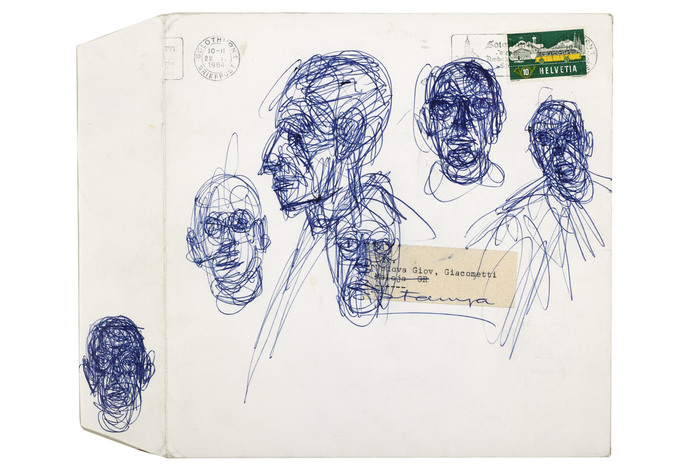CHIASSO - '' Drawing is a method of seeing ... Whatever it is, sculpture or painting, it is only the drawing that counts ". Thus Alberto Giacometti explained his way of facing the world, a key to understanding reality and obsession who accompanied him throughout his life. He drew everywhere, on every piece of paper, newspapers, magazines, the napkins of a bar, the plastered walls and wooden panels, on notebooks and albums for sketches, and experimented with the most different techniques. Even behind and beyond the famous sculptures of filiform human figures there was an enormous and uninterrupted work on the sign, an essential step in his research. The Max Museo di Chiasso dedicates the first major exhibition until 10 January 2021 to the graphic corpus of the Swiss master presents over 400 sheets, including woodcuts, engravings, etchings, lithographs and numerous artist books, including material from international institutions - first of all the Parisian Foundation entitled to the sculptor - and important private collectors, in the exhibition '' Alberto Giacometti (1901-1966). Graphics on the border between art and thought '' curated by Jean Soldini and Nicoletta Ossanna Cavadini stand out in particular three matrices for two lithographs and an etching in copper, a precious opportunity to better understand the quality and level of the works. The author's description of the creative environment is entrusted to the photographs of his friend Ernst Scheidegger who, since 1943, has documented Giacometti's activity and private life with images and videos, and from Ticino photographer Paola Salvioni Martini who met him at the beginning of the sixties.
'' Looking at its graphics allows us to understand Giacometti - explains Nicoletta Ossanna Cavadini -. For him, drawing is the primordial act of artistic thought and the moment of reflection. He was an unspeakable discontent of himself, so he could continue his search without interruption. '' Giacometti's journey was followed by his first experiences in the atelier of his father Giovanni, painter, to the surrealist period and the Parisian frequentations of Breton, Tristan Tzara and Mirò. In 1933 he broke with Breton and his artistic rethinking led him towards realism and study from life.
Refugee in Geneva during the Second World War he met a plethora of intellectuals and participated together with Albert Skira in the short life of Labirynth magazine with the gotha of the characters who then, like him, would have been the exponents of modernity in literature and art. After the war he returned to Paris and opened a small atelier near Montparnasse which, says the curator, "will become his den and his think tank and where he will create all the sculptural and pictorial work".
The exhibition illustrates Giacometti's extraordinary mastery of graphic techniques. Each of the four sections into which the exhibition is divided offers a painting, a drawing or a sculpture that helps to clarify the relationship between the different means of expression. '' In the mid-1950s he concentrated on lithography - explains Cavadini - producing an incredible quantity of works. The weight of the graphics becomes increasing until it is even prevalent in the 60s ''. In his prints Giacometti probes the human figure, in particular the female one, and focuses on the portrait "as an intimate essence of being" with its unmistakable style, aimed not at a likely result but at grasping the intimate aspect of his subjects. The face, the power of the gaze, the most essential physiognomy, everything aims to reveal the character of the characters, the mother, wife, brother, intellectual friends. "It is a work that never ends in itself - observes the curator - to grasp the essentiality of the gaze, with the mark insisted around the eye's orbit, to capture its strength and transmit it to the observer". Throughout his entire artistic career Giacometti dealt with the difficulty of representing life, elusive the more he tried to grasp its essence, and the nature of the human being, in a desire for knowledge in no uncertain terms: '' Art it matters a lot, but life interests me infinitely more. '' (HANDLE).
Beyond the sculptures, the sign of Giacometti
2020-06-16T06:38:36.581Z

"" Drawing is a method of seeing ... Whatever it is, sculpture or painting, it is only the drawing that counts ". (ANSA)
